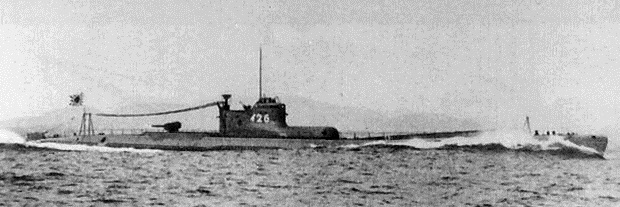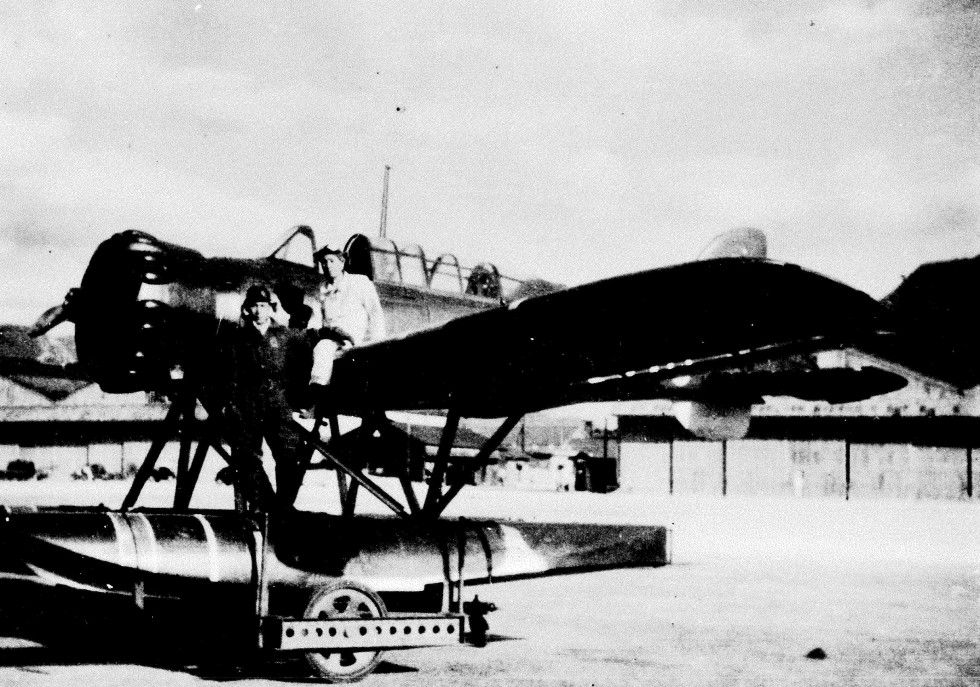Lookout Air Raids on:
[Wikipedia]
[Google]
[Amazon]

 The Lookout Air Raids were minor but historic
The Lookout Air Raids were minor but historic
''Los Angeles Times'' news story of September 15, 1942
- U.S. Forest Service {{Oregon Modern History 1942 in Oregon Aerial operations and battles of World War II Airstrikes American Theater of World War II Battles and conflicts without fatalities Conflicts in 1942 Curry County, Oregon History of Oregon Rogue River-Siskiyou National Forest September 1942 events Japan–United States military relations

 The Lookout Air Raids were minor but historic
The Lookout Air Raids were minor but historic Japan
Japan ( ja, 日本, or , and formally , ''Nihonkoku'') is an island country in East Asia. It is situated in the northwest Pacific Ocean, and is bordered on the west by the Sea of Japan, while extending from the Sea of Okhotsk in the n ...
ese air raids that occurred in the mountains of Oregon
Oregon () is a U.S. state, state in the Pacific Northwest region of the Western United States. The Columbia River delineates much of Oregon's northern boundary with Washington (state), Washington, while the Snake River delineates much of it ...
, several miles outside Brookings during World War II
World War II or the Second World War, often abbreviated as WWII or WW2, was a world war that lasted from 1939 to 1945. It involved the World War II by country, vast majority of the world's countries—including all of the great power ...
.
On September 9, 1942, a Japanese Yokosuka E14Y ''Glen'' floatplane
A floatplane is a type of seaplane with one or more slender floats mounted under the fuselage to provide buoyancy. By contrast, a flying boat uses its fuselage for buoyancy. Either type of seaplane may also have landing gear suitable for land, m ...
, launched from a Japanese submarine, dropped two incendiary bombs
Incendiary weapons, incendiary devices, incendiary munitions, or incendiary bombs are weapons designed to start fires or destroy sensitive equipment using fire (and sometimes used as anti-personnel weaponry), that use materials such as napalm, th ...
with the intention of starting a forest fire
A wildfire, forest fire, bushfire, wildland fire or rural fire is an unplanned, uncontrolled and unpredictable fire in an area of combustible vegetation. Depending on the type of vegetation present, a wildfire may be more specifically identi ...
. However, with the efforts of a patrol of fire lookout
A fire lookout (partly also called a fire watcher) is a person assigned the duty to look for fire from atop a building known as a fire lookout tower. These towers are used in remote areas, normally on mountain tops with high elevation and a ...
s and weather conditions not amenable to a fire, the damage done by the attack was minor. The attack was the first time the contiguous United States
The contiguous United States (officially the conterminous United States) consists of the 48 adjoining U.S. states and the Federal District of the United States of America. The term excludes the only two non-contiguous states, Alaska and Hawaii ...
was bombed by an enemy aircraft. It was also the second time the continental United States
The United States of America (U.S.A. or USA), commonly known as the United States (U.S. or US) or America, is a country Continental United States, primarily located in North America. It consists of 50 U.S. state, states, a Washington, D.C., ...
was attacked by enemy aircraft during World War II, the first being the bombing of Dutch Harbor three months earlier.
Lookout Air Raids
On Wednesday morning, September 9, 1942, the submarine ''I-25'', under the command ofLieutenant Commander
Lieutenant commander (also hyphenated lieutenant-commander and abbreviated Lt Cdr, LtCdr. or LCDR) is a commissioned officer rank in many navies. The rank is superior to a lieutenant and subordinate to a commander. The corresponding ran ...
Akiji Tagami, surfaced west of Cape Blanco. The submarine launched a "Glen" Yokosuka E14Y floatplane, flown by Warrant Officer
Warrant officer (WO) is a rank or category of ranks in the armed forces of many countries. Depending on the country, service, or historical context, warrant officers are sometimes classified as the most junior of the commissioned ranks, the mo ...
Nobuo Fujita and Petty Officer
A petty officer (PO) is a non-commissioned officer in many navies and is given the NATO rank denotation OR-5 or OR-6. In many nations, they are typically equal to a sergeant in comparison to other military branches. Often they may be super ...
Okuda Shoji, with a load of two incendiary bombs
Incendiary weapons, incendiary devices, incendiary munitions, or incendiary bombs are weapons designed to start fires or destroy sensitive equipment using fire (and sometimes used as anti-personnel weaponry), that use materials such as napalm, th ...
of each.
Howard "Razz" Gardner spotted and reported the incoming "Glen" from his fire lookout tower on Mount Emily in the Siskiyou National Forest.
Although Razz did not see the bombing, he saw the smoke plume and reported the fire to the dispatch office. He was instructed to hike to the fire to see what suppression he could do. Dispatch also sent USFS Fire Lookout Keith V. Johnson from the nearby Bear Wallow Lookout Tower. Fujita dropped two bombs, one on Wheeler Ridge on Mount Emily in Oregon
Oregon () is a U.S. state, state in the Pacific Northwest region of the Western United States. The Columbia River delineates much of Oregon's northern boundary with Washington (state), Washington, while the Snake River delineates much of it ...
. The location of the other bomb is unknown. The Wheeler Ridge bomb started a small fire due east of Brookings.
The two men proceeded to the location and were able to keep the fire under control. Only a few small scattered fires were started because the bombs were not dropped from the correct height. The men stayed on scene and worked through the night keeping the fires contained. In the morning, a fire crew arrived to help. A recent rain storm had kept the area wet, which helped the fire lookouts contain the blaze.
Aftermath
A full investigation was launched by theFederal Bureau of Investigation
The Federal Bureau of Investigation (FBI) is the domestic intelligence and security service of the United States and its principal federal law enforcement agency. Operating under the jurisdiction of the United States Department of Justice ...
, which resulted in locating several bomb fragments. The story was reported in several newspapers on September 10, 1942. Lieut. Gen. John L. DeWitt
John Lesesne DeWitt (January 9, 1880 – June 20, 1962) was a 4-star general officer in the United States Army, best known for leading the Japanese American internment, internment of Japanese-Americans during World War II.
After the attack on Pe ...
, the area commander announced, TheThe floatplane carried two bombs. Both were dropped, according to the Japanese records, but no trace has yet been found of the second bomb. One of the bombs left a foot-deep crater. Fujita and his observer made a second attack on September 29, again causing only negligible damage.Western Defense Command Western Defense Command (WDC) was established on 17 March 1941 as the command formation of the United States Army responsible for coordinating the defense of the Pacific Coast region of the United States during World War II. A second major respo ...is investigating the circumstances surrounding the discovery on Sept. 9 of fragments of what appears to have been an incendiary bomb. These fragments were found by personnel of the United States Forestry Service near Mt. Emily nine miles northeast of Brookings, Or. Markings of the bomb fragments indicated that the missile was of Japanese origin.''Jap Incendiary Sets Forest Fire. DeWitt's Announcement Hints Raider May Have Been Launched From Submarine Off Coast, Later Attacked by Patrol Planes''
/ref>
Postwar
Twenty years later, the floatplane's pilot, Nobuo Fujita, was invited back to Brookings. Before he made the trip theJapanese government
The Government of Japan consists of legislative, executive and judiciary branches and is based on popular sovereignty. The Government runs under the framework established by the Constitution of Japan, adopted in 1947. It is a unitary state, ...
was assured he would not be tried as a war criminal. In Brookings, Fujita served as Grand Marshal for the local Azalea Festival. At the festival, Fujita presented his family's 400-year-old samurai sword to the city as a symbol of regret. Fujita made a number of additional visits to Brookings, serving as an "informal ambassador of peace and friendship". Impressed by his welcome in the United States, in 1985 Fujita invited three students from Brookings to Japan. During the visit of the Brookings-Harbor High School students to Japan, Fujita received a dedicatory letter from an aide of President Ronald Reagan
Ronald Wilson Reagan ( ; February 6, 1911June 5, 2004) was an American politician, actor, and union leader who served as the 40th president of the United States from 1981 to 1989. He also served as the 33rd governor of California from 1967 ...
"with admiration for your kindness and generosity". Fujita returned to Brookings in 1990, 1992, and 1995. In 1992 he planted a tree at the bomb site as a gesture of peace. In 1995, he moved the samurai sword from the Brookings City Hall into the new library's display case. He was made an honorary citizen of Brookings several days before his death on September 30, 1997, at the age of 85. In October 1998, his daughter, Yoriko Asakura, buried some of Fujita's ashes at the bomb site.
See also
*'' Amerikabomber'' * Bombardment of Fort Stevens * Fu-Go balloon bomb *Operation K
was a Japanese naval operation in World War II, intended as reconnaissance of Pearl Harbor and disruption of repair and salvage operations following the surprise attack on 7 December 1941. It culminated on 4 March 1942, with an unsucces ...
Notes
References
External links
''Los Angeles Times'' news story of September 15, 1942
- U.S. Forest Service {{Oregon Modern History 1942 in Oregon Aerial operations and battles of World War II Airstrikes American Theater of World War II Battles and conflicts without fatalities Conflicts in 1942 Curry County, Oregon History of Oregon Rogue River-Siskiyou National Forest September 1942 events Japan–United States military relations